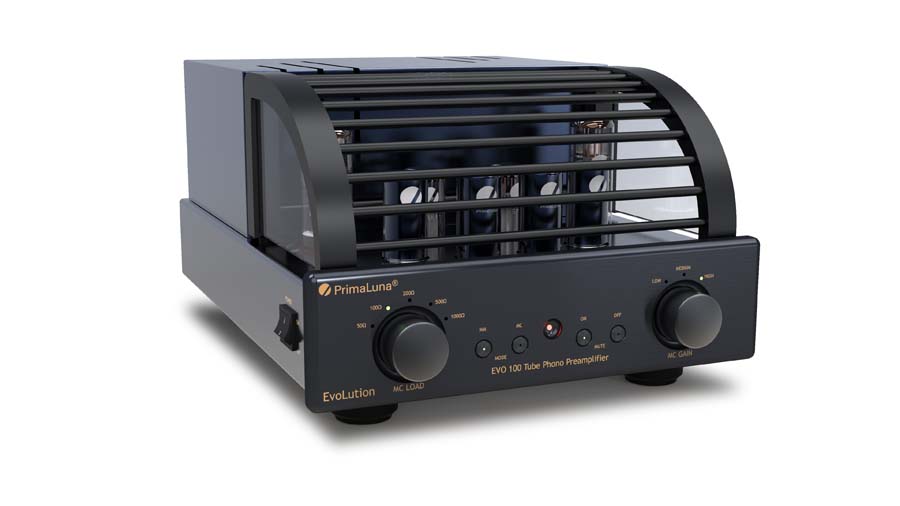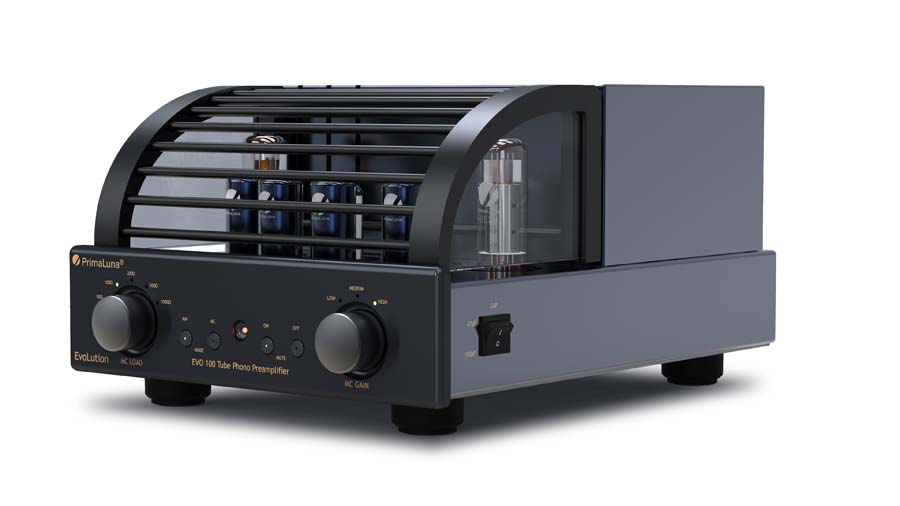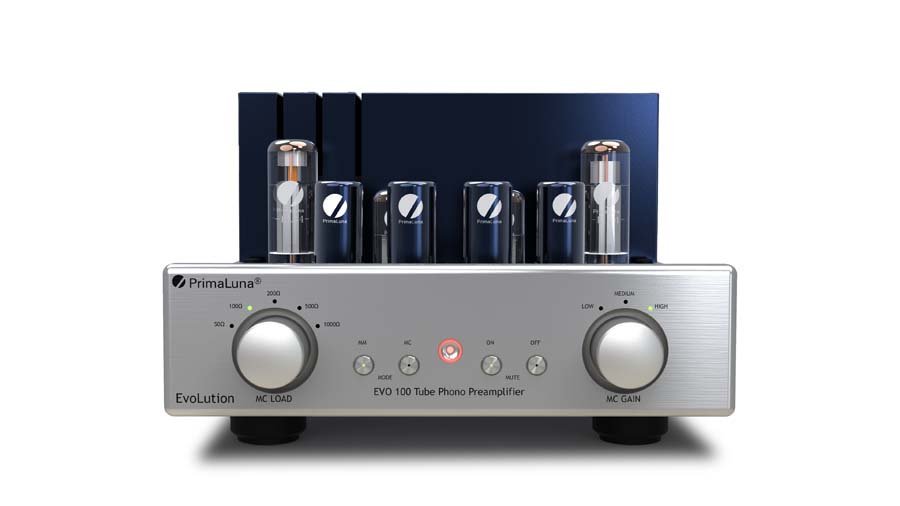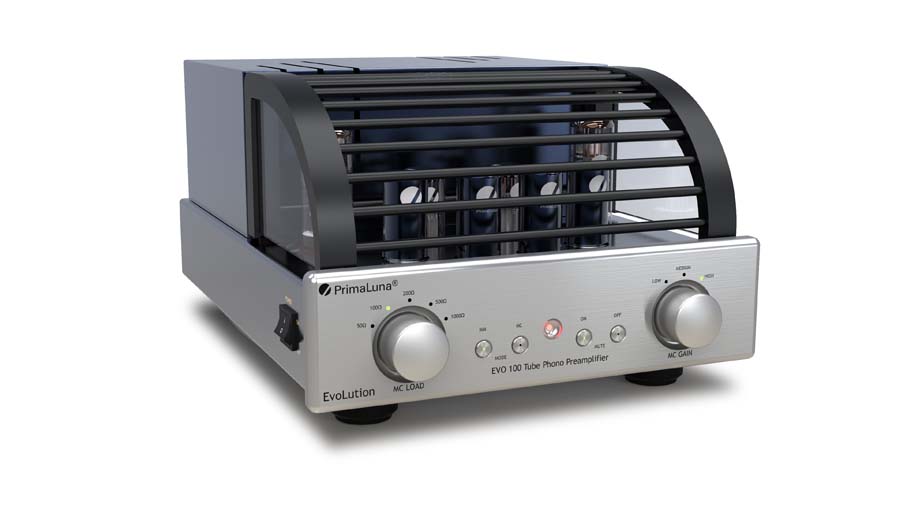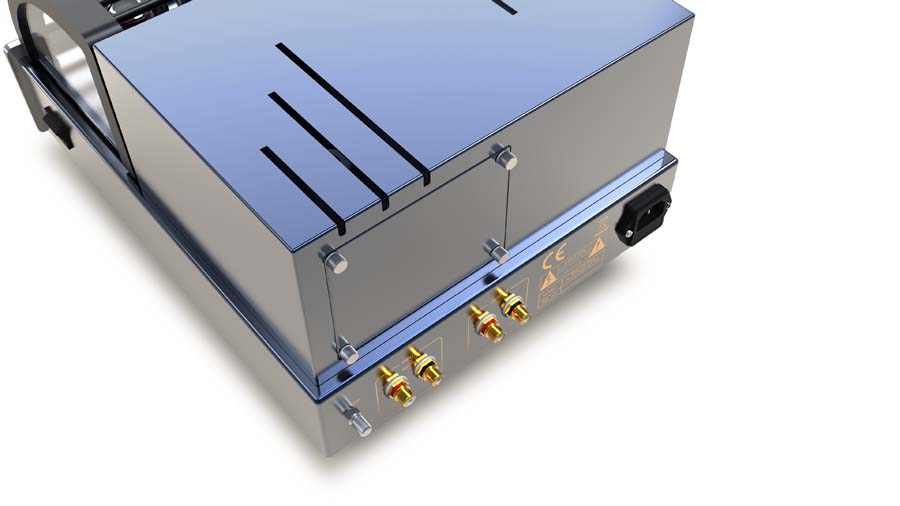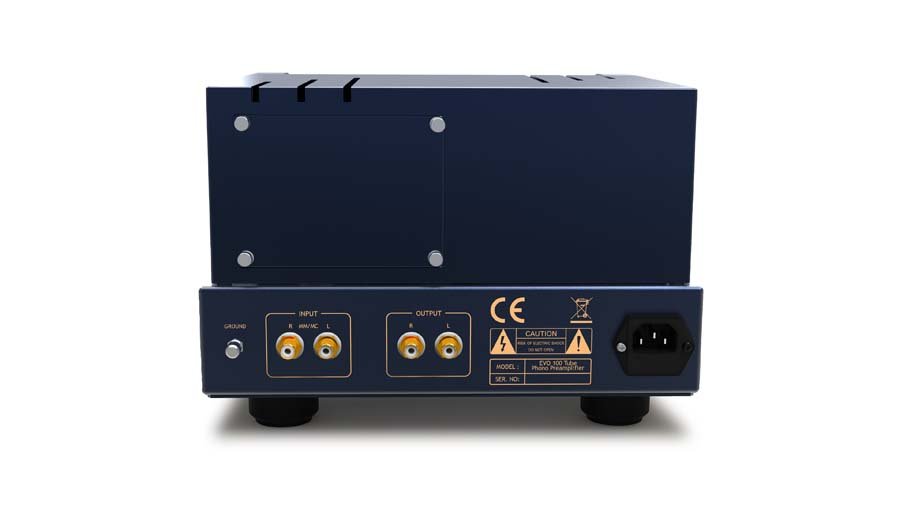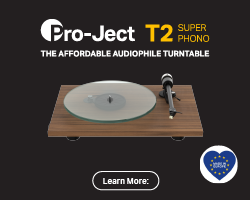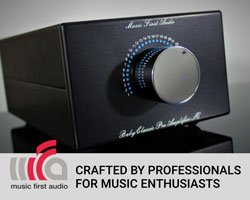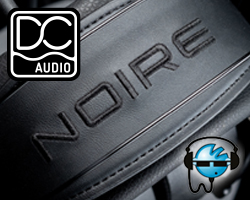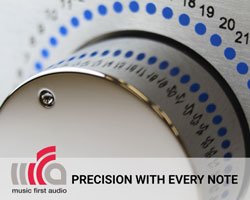PRIMALUNA EVO 100 PHONOSTAGE REVIEW
The PrimaLuna EVO 100 is an all-valve, handmade Phonostage that will cater to users of Moving-Magnet and Moving-Coil cartridges, Janine Elliot takes a listen for HiFi PiG.
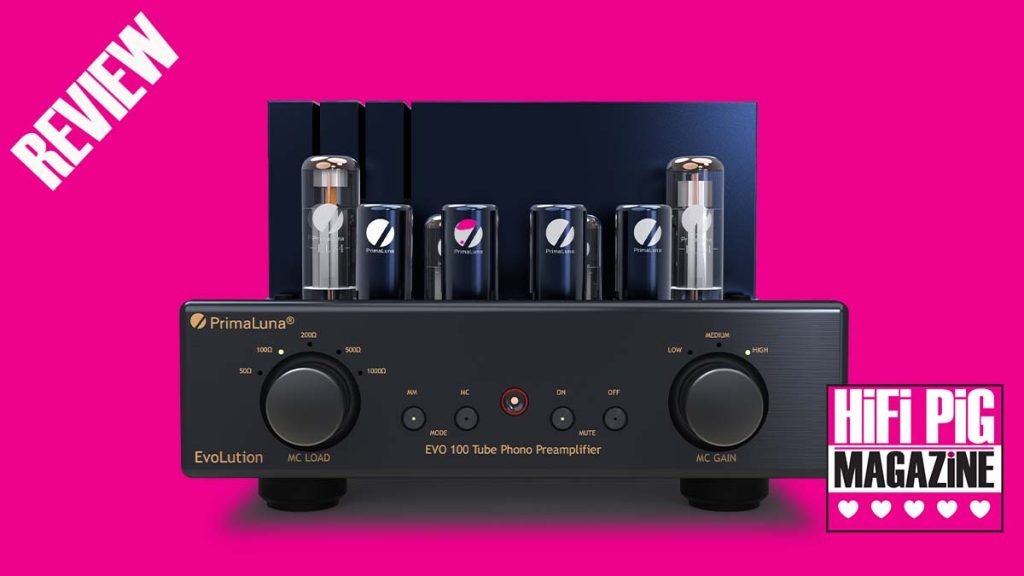
I have had a love affair with tube phono-stages over the years, settling, finally, on the Manley Labs Steelhead, a very versatile unit at the time it came out. Now, even the cheapest phono-stages have the facilities to acclimatize your cartridge to the best load and capacitance. The £3398 PrimaLuna EVO 100 tube phono preamplifier – up for review here – is no exception, as we shall find out. This is the company’s first foray into valve phono-stages, having previously built a transistor MM phono-stage module for adding to EvoLution integrated and preamp models launched in 2019. Harnessing no fewer than 10 valves (two are hidden inside the box) this continues Primaluna’s philosophy of “valve is best”. Their EvoLution portfolio includes a range of four integrated valve amps, four preamps, four stereo power amps (also configurable to mono), one DAC, and now one phono preamp – all valve-based. There’s also the EVO 300 Hybrid Integrated Amplifier, making up a total of 15 PrimaLuna EvoLution models.
PRIMALUNA
PrimaLuna, meaning “First Moon” celebrated its twentieth anniversary in 2023, a Dutch company founded by high-end distributor Herman van de Dungen, whose earlier career included designing, manufacturing, export, import, and retail of HiFi products. The EVO, or EvoLution series is the culmination of many years of experience. With Marcel Croese (from Goldmund) and Dominique Chenet (from Jadis) plus tube guru Kevin Deal, this is a top end team to produce the very best in audio. With the best team you also need the best components and this product not only looks gracefully similar to the other Primaluna products but has equally excellent internal organs.
BUILD QUALITY AND FEATURES OF THE PRIMALUNA EVO 100
Available in black or silver, the PrimaLuna EVO 100 phono amp is hand-made using a heavy gauge vented steel chassis and with no less than 5-layers of paintwork, each layer hand-rubbed and polished. The inside uses premium components including ceramic tube sockets, Nichicon and Du Roch capacitors, two 5AR4 tubes in the power supply rectifier circuitry, two EL84’s, four 12AX7s (two of which for the MM amplification) and two 6922’s for the MC stage. Gold-plated RCA input and output sockets are fitted to the rear. The unit employs PrimaLuna’s SoftStart warm-up stage circuitry to ensure the long-life of the valves on powering up, and Power Transformer Protection circuitry so that if the power transformer overheats then an internal thermal switch turns off the unit. A bit more sophisticated than my faithful Leak Stereo 20 which just has an upside down 100 Ω fuse which de-solders itself when it gets too hot!
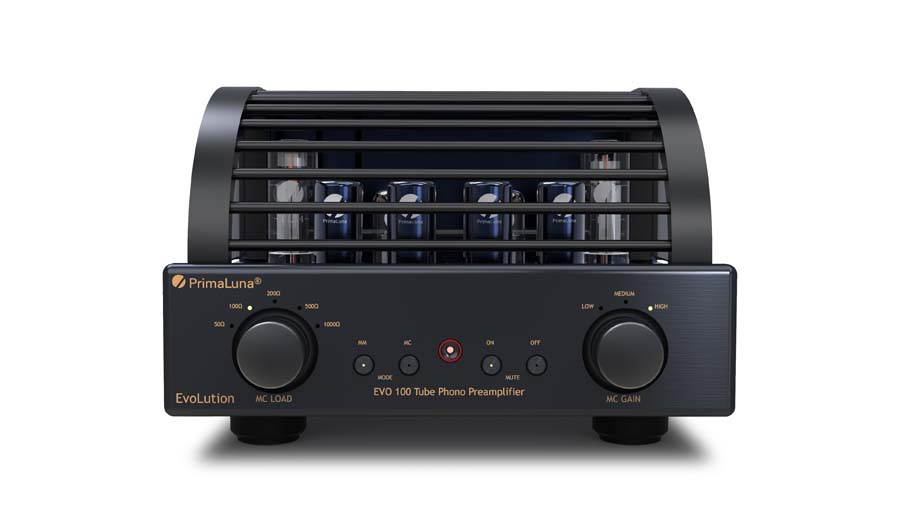
At the front are the buttons and switches, with rocker switches at the sides. The left rocker switch is the off/on control. On the left at the front is the impedance knob for MC, giving a choice of 50, 100, 200, 500 and 1000 ohm load. Next to this is the MC/MM switch (MM is 47,000Ω), then the mute on/off switches. To the far right is the MC output gain of 52, 56 or 60dB. MM gain is preset at 40dB. On the right side is the other matching rocker switch of this beautifully symmetrically adorned unit, namely the choice of 47 and 100pf capacitance for the MM cartridge. All buttons have green LED indicators as do the load and output settings around the knobs. During the minute-long set-up period the main central LED lights red, changing to the green when all is satisfactory. I cannot fault in any how this preamp has been laid out, and it should work brilliantly with any MC or MM cartridge.
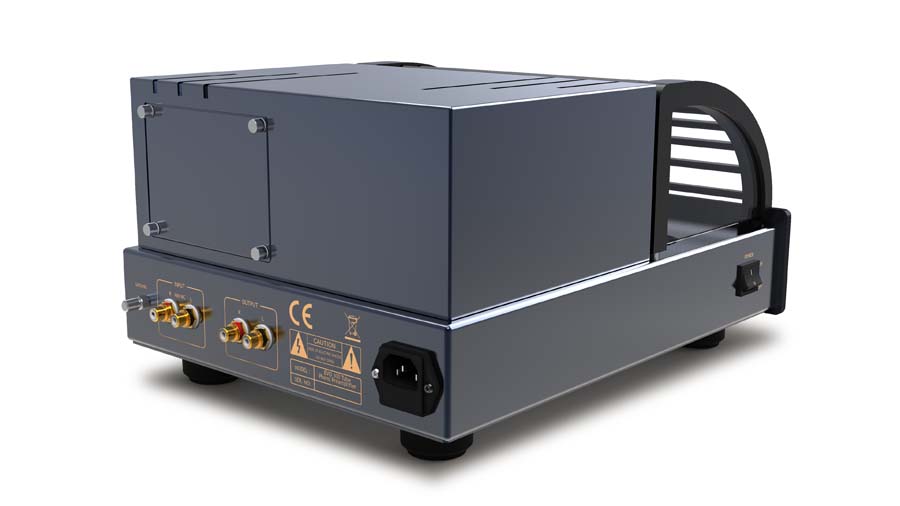
The interior layout is excellent. Whilst the protection valve cage around the valves can be removed I left it all in situ. Always a good idea if you have kids or cats. Whilst 8 of the valves were visible, it was just a shame that the 6922 tubes for the MC amplification were hidden inside, only accessible from a hidden door at the back. With the sound they gave they shouldn’t have been quite so shy to show themselves!
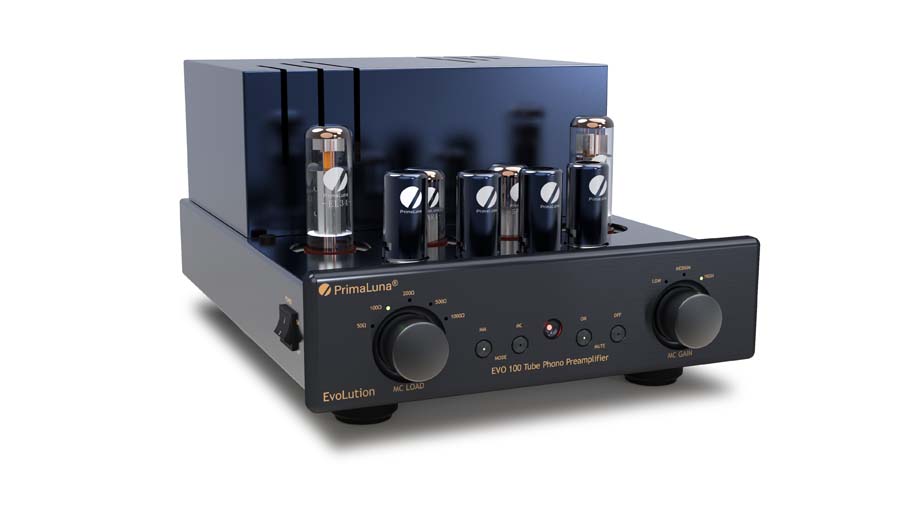
SOUND QUALITY
First to be played was Pat Metheny’s ‘Road to the Sun’, a peaceful and smooth album that sounded so good with the EVO. Even with a 42-string guitar made especially for Pat, in a performance of Estonian composer Arvo Pärt’s “Für Alina”, nothing phased this amplifier. The detail was all there and in a very musical performance. The silky-smooth performance continued with Mark Knopfler’s ‘Get Lucky’, and this time with some extra bass detail. I was falling in love with the EVO, it was a really musical player, though like in a relationship I just hoped there’d be just a little more aggro. It was perhaps a little too polite for my own personal tastes. There was a clear acoustic guitar and precise percussion, with excellent control of the bass line in “The Car Was the One”. “Remembrance Day” might as well have been a Christmas song with all the bells at the start, though this song was more about Morris Men and Cricketers. Whatever it was, it sounded detailed and well-orchestrated across the soundstage. The percussion and vocals welled together perfectly, with the addition of an organ perfectly placed in the choruses. Again, the soundstage was particularly good with the addition of children singing “We will remember them”, a phrase perhaps more synonymous with the Second World War. The EVO has “Adaptive Auto Bias” employing sensors to monitor the tubes and make adjustments in real-time, culminating in little need for maintenance and the lowest possible distortion, and indeed this unit was so easy to set up and operate at its best. I chose 200ohm for my AT33sa cartridge. With the SoftStart circuitry, it ensures the long life of sensitive components. In comparison with my more expensive Manley Steelhead, I still think the latter is hard to beat, even today, though the PrimaLuna had a good attempt at unseating it from its thrown, being slightly better behaved, though not quite so exciting.
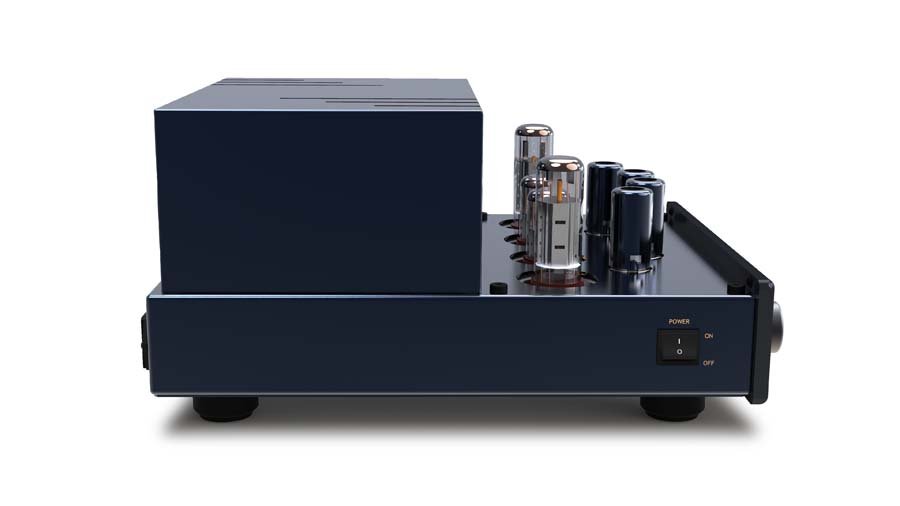
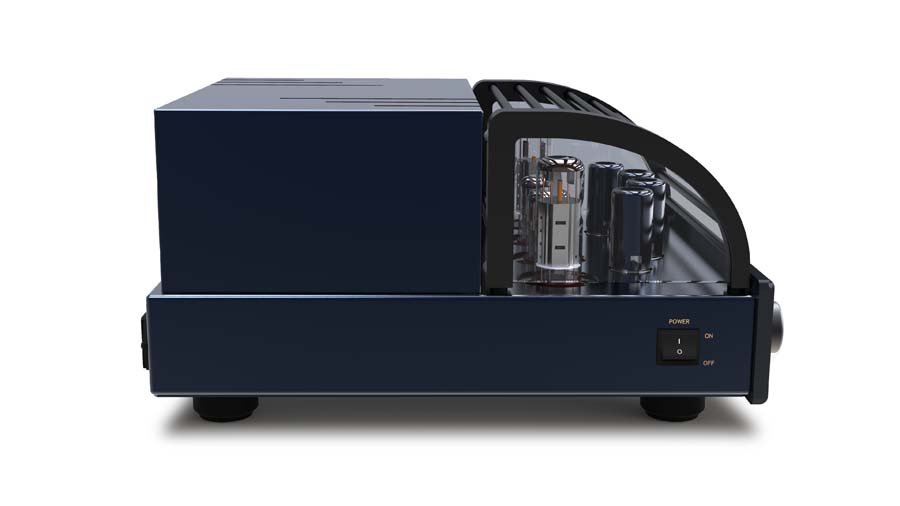
Turning to Duke Ellington’s 70th Birthday Concert album, here there were clear and powerful drums and an exuberant brass presence in this mega double album recorded on a cold November evening in Manchester in 1969, some 50 years since his first exploration as a band leader. No less than 6 saxophones, 4 trumpets and 2 trombones add to the basic setup with an organ and the Duke at the pianoforte. This was his first album recorded in England since 1933, and a very special performance was had across the soundstage. “Take the A-Train” was beautifully smooth yet still full of details and musicality that I would find in all that I played. The stereo spread was extended and detailed; an almost 3D performance as if I were in the audience.
I was able to put many discs on my Pre-Audio turntable for this review, covering all idioms, and found the EVO didn’t fail on anything I chose. With classical music such as Liszt’s Piano Concerto 1 (Sergio Florentino, Hamburg ProMusica), perhaps some of the detail was lost. However, in Bruckner’s epic 4th Symphony (Riccardo Muti/Berliner Philharmoniker), the EVO was able to shine. This work starts very quietly with a misty atmosphere of horns and shimmering strings. The amplifier is very quiet (>90dB S/N) allowing the listener to hear all the detail. As the work picks up all the detail in the strings and brass show off this very able phono-stage. Whilst it might show Bruckner at his best, the composer himself wasn’t happy and his displeasure meant he would completely rewrite the third and four movements. The new third movement Scherzo was brilliantly detailed from the EVO, and the stereo spread was excellent, especially the first violins and brass. This is a DMM (Direct Metal Mastering) disc, which means that unlike in conventional disc mastering where the modulation is cut into a lacquer-coated aluminium disc, the DMM cuts it straight onto copper metal using a modified Neumann cutting lathe with special diamond styli vibrating at 60kHz to enable the cutting. The stampers can then be made directly from these plates. This was an excellent quality recording and press that shone on the EVO.
I recently reviewed a phono-stage playing an excellently recorded version of Bartok’s Concerto for Orchestra, an early digitally mastered vinyl. This time I chose the excellent Fritz Reiner and the Chicago Symphony Orchestra version. I love this work and the EVO didn’t quash my excitement. The bass was tight; well controlled and full on. This work is full of fortissimos and excellent melodic lines, particularly in the strings, and the EVO 100 particularly excelled in the mid frequencies such as strings and vocals. Everything was crystal clear and detailed. Whilst both the EVO and my own Manley both use 6992’s in the gain, I did feel the latter gave much more power and detail, though at 3 times the price. Don’t get me wrong, the PrimaLuna is exceptional, it just lacked a little oomph for me. Playing Pink Floyd “Another Brick in the Wall (part II)”, for example, left me feeling some of the excitement was missing when compared to the more expensive Manley.
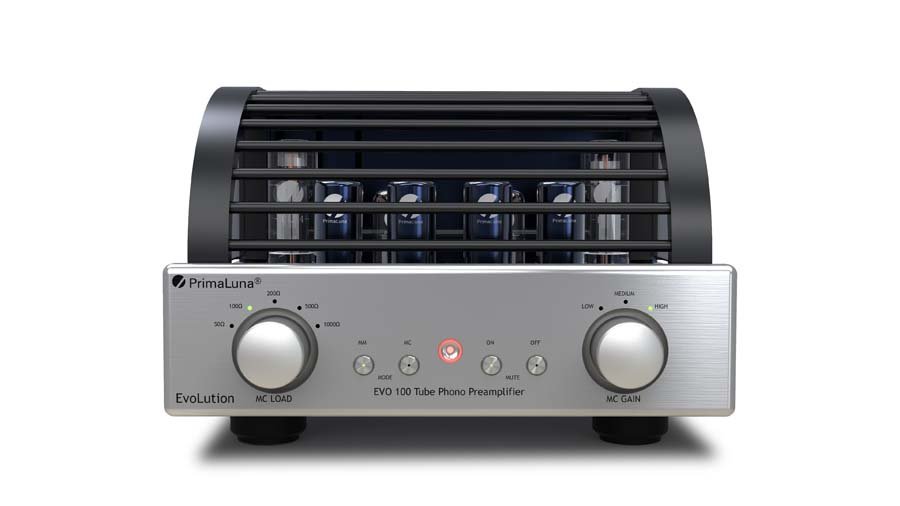
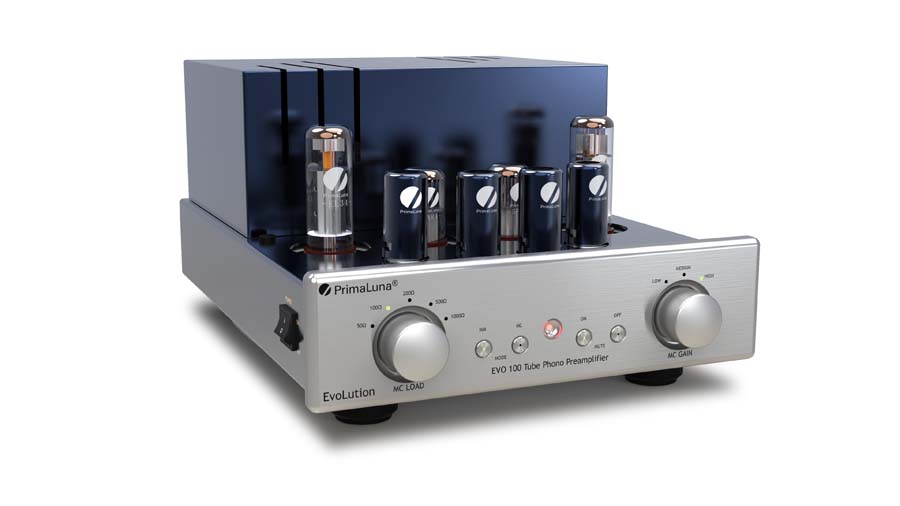
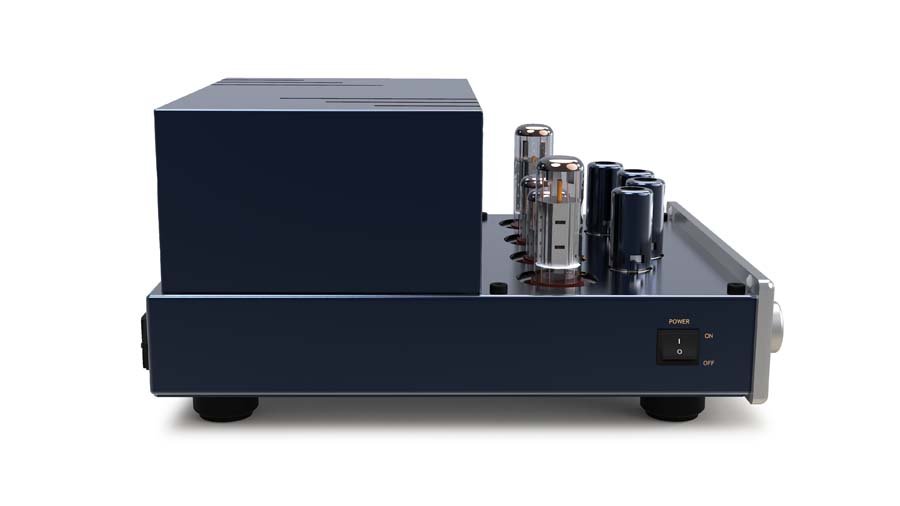
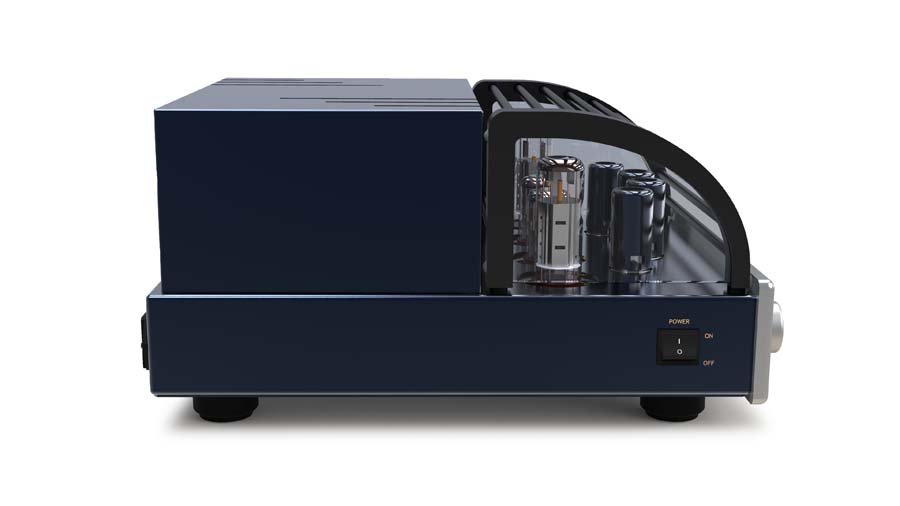
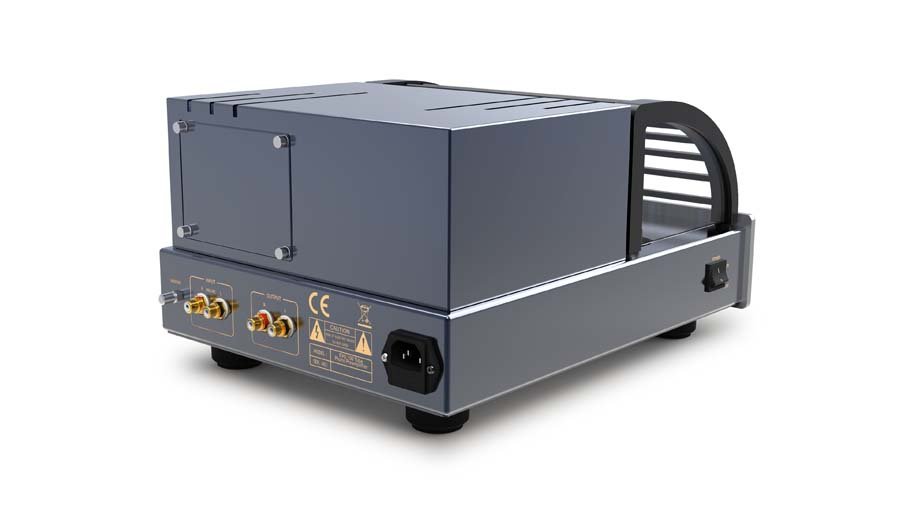
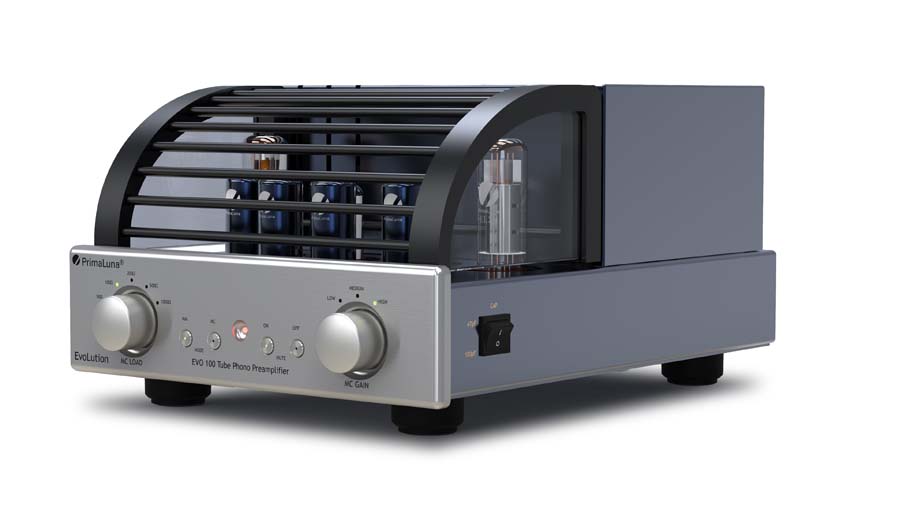
Next on the platter was a collection of big-band and classical music to celebrate “Full Dimensional Sound – Further Studies in High Fidelity”, a 1955 EMI/Capitol Records venture complete with booklet. Designed to amaze the listener in the 50’s this album has been easily surpassed over the years, but I thought I’d give it a go. I have used this excellently presented album a number of times in reviews as the music has lots of space and detail. The EVO was no exception in showing off this record brilliantly. Some of the tracks were mono, and my only query with the EVO was that there was no mono switch, though I am looking for complaints here, and many other phonostages don’t include this quite specialist feature. Mono tracks and stereo clicks don’t go well together. “La Bomba” from Bill May and the Afro-Cubans was fun to listen to, especially the extremely wide dynamic range and deep bass and high cymbals in the percussion making for a great test of this EQ unit. Yes, the EVO is flat across all frequencies offering a really good RIAA curve. Even checking the MM settings with my VMS20e/Technics SL-Q2 setup proved to be equally rewarding.
Pink Floyd’s “Astronomy Domine” (1967) has lots of well-defined sounds appearing haphazardly across the soundstage and the EVO coped brilliantly retrieving all the information. This was one of Syd Barrett’s finest works and a great way to finish my listening.
CONCLUSION
The EVO 100 phono-stage is an exceptional performer in terms of accuracy and musicality and worked so well with all that I played, always sounding very well behaved. For the price I highly recommend you give it a try, and whilst I found it was particularly at home with my valve Synthesis Roma 98DC monoblocks, it also worked excellently with SS amplifiers, such as my Krell KAV250a poweramp.
AT A GLANCE
Build Quality:
Cannot be faulted
Excellent build and materials
Sound Quality:
Excellent soundstage and highly musical
Value For Money:
£3398 gets you a lot of musicality per pound
We Loved:
Bass extension
Features
Excellent mid frequencies
Quiet in operation
Excellent in all types of music
We Didn’t Love So Much:
Just wish those 6922 valves weren’t hidden! Given that’s my only real quibble beyond the lack of a mono switch this is high praise!
Elevator Pitch Review: The Dutch company PrimaLuna has specialised in valve amplifiers for twenty years, always coming up with something that is well received by the audiophile. I was keen to see just how good their first valve phono-stage would be, and wasn’t at all to be disappointed. The EVO tube phono preamplifier is a very able product with lots of safety features to keep you and your valves happy.
Price: £3398
Janine Elliot
REVIEW SYSTEM
Pre-Audio GL-1102N/Audio Technica AT33sa, and Technics SL-Q2/Ortofon VMS20e (turntables); Music First Audio Baby Reference pre-amp/Synthesis Roma 98DC and Krell KAV250a (amplification); Esprit, Ecosse and Townshend cables, Coppice Audio stand and Townshend rack.
Specification
Max. Output Voltage: 26.3dBV/20.6Vrms
RIAA curve: 0.5dB (20Hz-20kHz)
Bandwidth: 0-20kHz (+0/-3dB
Phase response: <1°
THD+N (A-weighted) MM/MC: <0.4%@2V
Output Impedance: 100Ω@1khz
Gain; MM 40dB MC 60/56/52dB
Impedance: 47kΩ MM 50,100,200,500,1000Ω MC
Input Capacitance: 47pF/100pF MM; n/a MC
Input sensitivity: 2.5mv MM 0.104mVrms MC (200mVrms@1kHz)
Channel Separation (@1kHz): >75dB MM >60dB MC
S/N Ratio (A-Weighted) @ 23.8dBV: >90dB MM, >90dB MC
S/N Ratio (A-Weighted) @ 6.0dBV: >75dB MM, >75dB MC












































